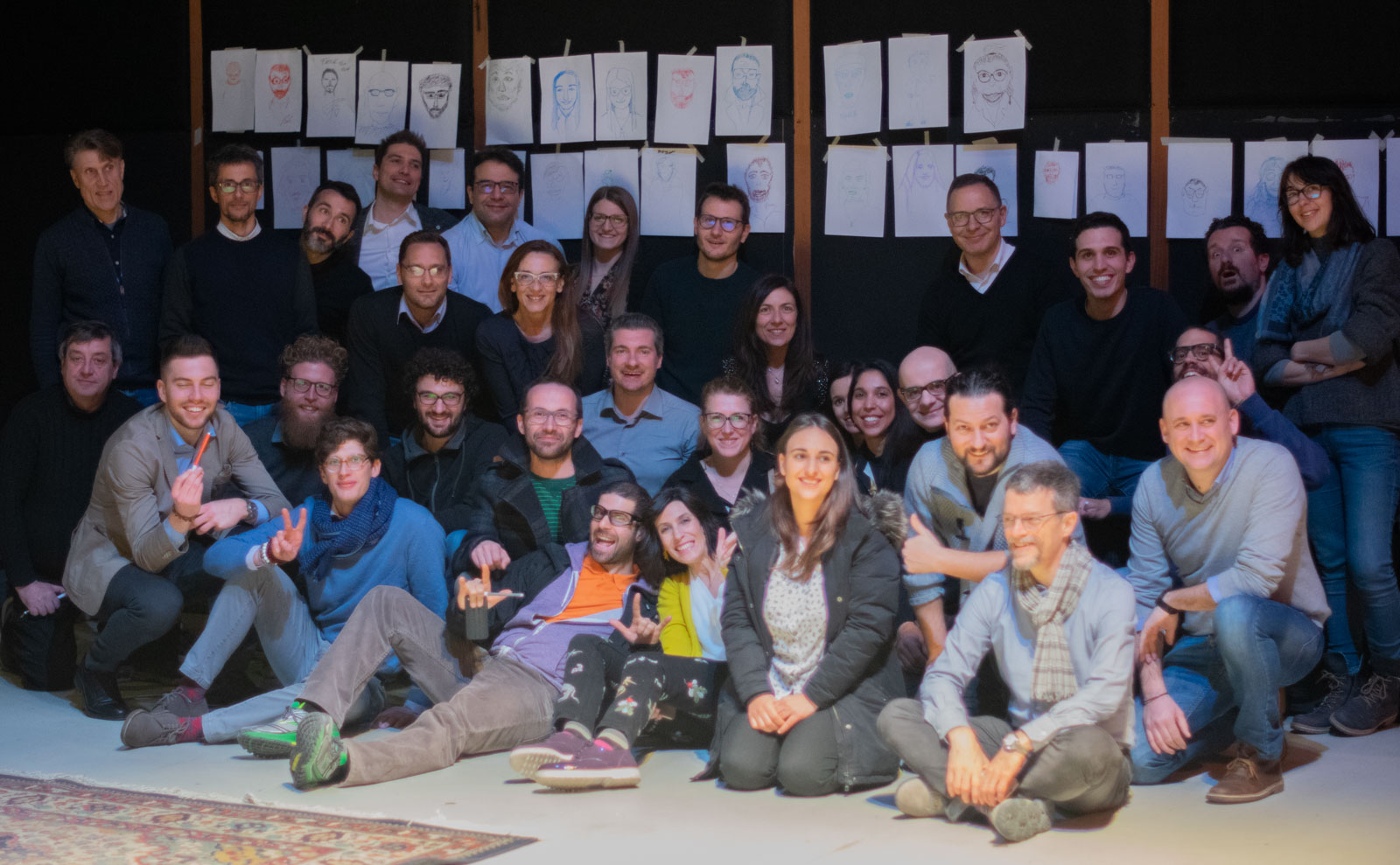’m gonna start off with the phrase we commenced developing all the communication from in the last Agile Venice Meetup: “Gaming is a serious thing”.
Playing is a pleasure-producing activity and is used as a means of achieving a state of freedom and daring expression of one’s imagination. For this reason, for some time now, playing games is becoming more and more a super useful tool for teaching, learning and understanding.
It was October 10 when I picked up the phone and called Antonio Fazio, an agility passionate – Agile Coach and Trainer at Agile Reloaded – who proposed as a possible theme of our meetup dedicated to the Agile culture, a shorter version of a Play14. The tone of his voice had conveyed so positive vibrations and sensations to me, to make it easy indulging his idea with equal positivity.
Nevertheless, I had a blank look for a few seconds… Play what?
A few minutes passed and the Reloader – Antonio is part of AgileReloaded, the Italian company for Agile Coaching – said that PLAY14 is an international format dedicated to serious gaming landed for the first time in Italy in 2016.
When I hung up the phone I literally ran on the web, searching for information on #PLAY14. What I found thrilled me to the point of thinking “So cool!” and I immediately talked about it with the rest of the team: excitement through the roof! We immediately got to work to set a date and a location for the venue.
Eventually, we went for the 15th of February and tried to work out an attractive title – from an early not very convincing “#picoplay14”, to the definitive “#MiniPlay14” – and then the graphics, the communication, posters and resources.
The #miniplay14 night
On my way to Venice, for participating to the first workshop of our Agile Venice Meetup, I could have never imagined an evening like the one I experienced.
In fact, I didn’t know exactly what to expect: some hints here and there, but nothing too clear about the activities Antonio Fazio and Francesco Pratolongo – the second Reloader “player” – would have introduced in the soirée.
However, at 19:00 hour, the situation was the following:
Reloaders in your blocks? Check!
Us, the Interlogica team? Ready!
Funny rounded tip scissors, a stash of colored balls, markers all over the place and tons of sticky notes, marshmallows and…spaghetti!?
Anyway… Check!
The attendees? Eagerly enthusiastic…
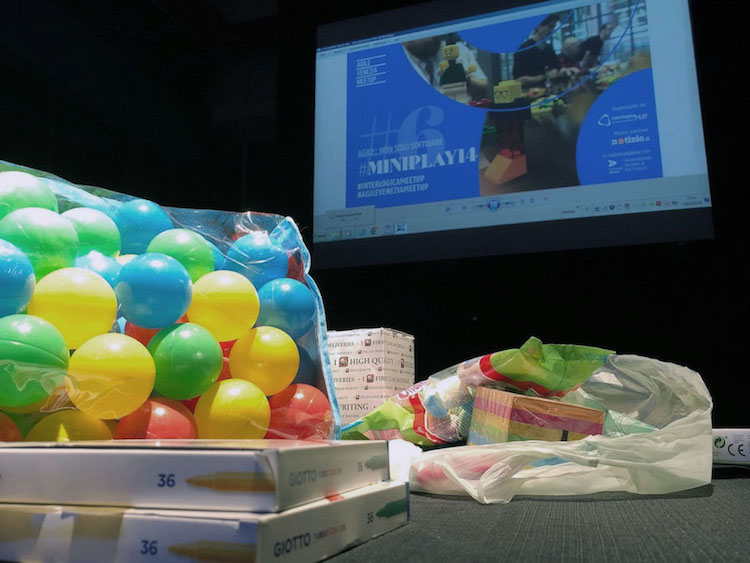
Before I get into the story of my first experience with serious gaming, here’s a little insight on #Play14, father of our #MiniPlay14.
#Play14: Serious Gaming Unconference
As mentioned at the beginning, after my call with Antonio Fazio, I started immediately to search for information on this peculiar event and I immediately came across a website that striked me first and foremost for both the colours and the payoff:
“We believe in Playfulness.”
By Scrolling through the web page I could read conferences, or rather “non-conferences” – the right word is uncoferences – around the world. The movement set off from Luxembourg, spread like wildfire throughout Europe, crossed the oceans and arrived in Australia and Mexico.
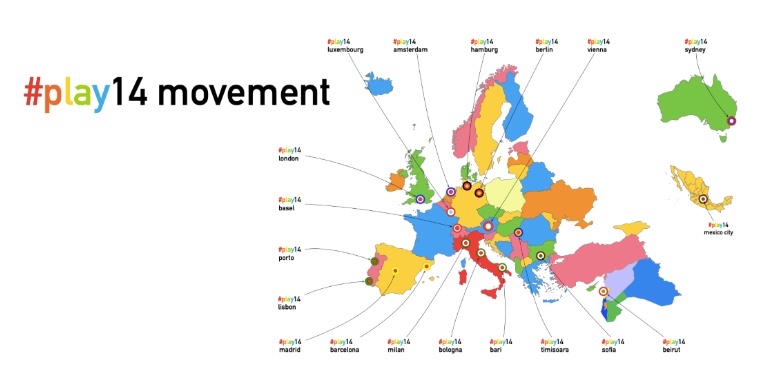
#Play14 is therefore an unconference, a type of event where the content of the sessions is influenced and created by the attendees. Usually an event lasts about two days, organized as a full immersion in serious gaming.
The game theme is self-serving for a team building context, retrospective analysis, learning, modeling, problem solving and much more.
The program is not predetermined by the organizers, it is created by following the classic mechanism of the “marketplace”: at the beginning of each event day, people are free to make suggestions on contents, put them in different time windows and choose the place to perform the activities.
The main rule is the so-called “Two Feet Law”, which is useful to stimulate the freedom of participation and the contamination between the various sessions. Each participant, in fact, can see what it considers more interesting, enter/exit the various spaces of play either to bring other groups what heard/learned previously or to devote time to things that may be of greater interest for the person.
Miniplay14 getting into the action
Let’s go back to “my” #MiniPlay14. As I write I’m noticing it is difficult to put in words the climate and the vibrations I had been transmitted by the attendees.
This mini version is a variation from the real #Play14, as we are clearly lectured by the two Reloaders before entering into the heart of the evening; they had already created a “marketplace” for us with all the activities:
- networking theme – “The dating Game” or “Names”;
- pushing Team Building – “Team it up” or “Ariadne’s thread”;
- inspire Lateral Thinking – “Mime the Stick” or “Out of the Box”.
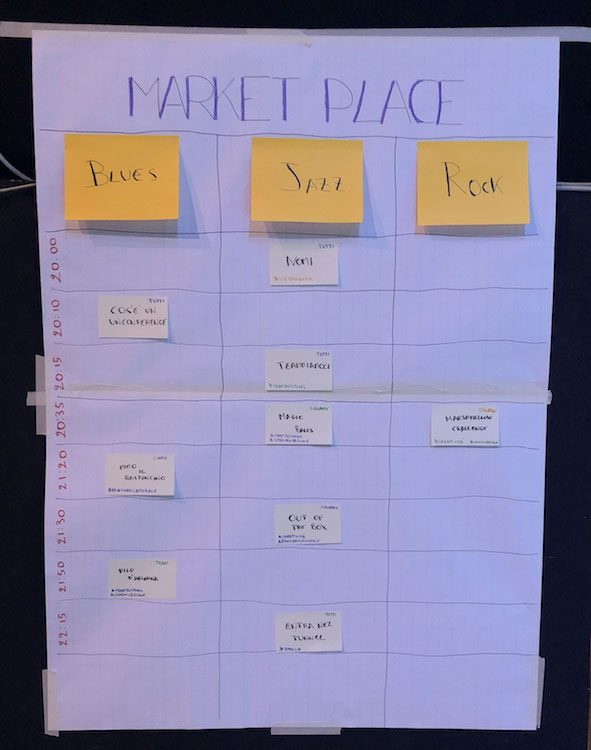
The first games, ice starts to break
As part of the team that organized the event, my task was well defined from the beginning, welcoming the participants to the entrance. Just before the official kick off, however, Antonio wiped the slate clean and suggested, or better, advocated to turn the tables. The usual welcome is boredom so why not using the check-in process of the event to explain a first game?
Good idea, I thought, and it would certainly make the downtime of people waiting be more intriguing.
Fazio then proposed to add this game he had in mind, to help the participants to break the ice, helping them to interact immediately, during the usual cocktail reception.
In order to avoid the usual groups of acquaintances being formed, an additional effort is asked to the participants: inviting them to join the “game of the other half” which consists in finding who completes another. One fishes a tag with a name, a thing, etc, out of a pile, with the task of tracing the X or Y chromosome that completes them. You’ve fished out white so you gotta find black. Are you Beauty? Move on and locate The Beast. Laurel, where will your trusted friend Hardy be? And so on…
When all people – now on a full stomach – were invited to put themselves in a circle and match their name with a gesture that represented them, we got things properly rolling.
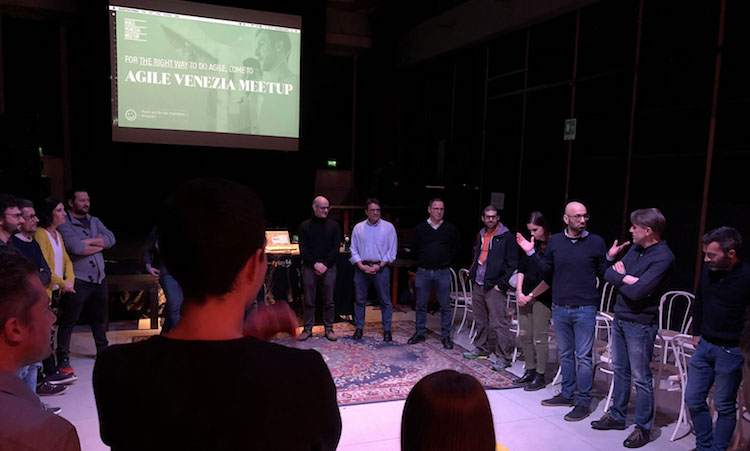
Since from this first game you could see the ones more prone to get involved and those who played defense. There were those who would make absurd gestures and others who would go safely for the most traditional ones. A part of the personality of each of us began to emerge.
Completed the full round of the circle, we were invited to stand in line according to certain features: age, hair lenght, time taken to arrive at the location (I admit that I can’t remember well which of these options was used first; P), then we split into couples.
We sat then on the chairs which were previously set on two front lines and where we found a paper sheet and a marker laying on each seat.
Few instructions, but clear: making a portrait of the person sitting front. Between hesitations and worries about the very poor artistic talents, we all put ourselves out there, and after 5/10 minutes the works of art were finished and hung on the wall on display.
On Portraits and Team Building
For the following game we needed to form four teams. Four leaders were quickly appointed to select the team members basing their choices on the portraits put up on the wall.
The groups were formed between laughter and confusion… (On the other hand it was not easy to identify each other through the hands of those who outlined the traits of one’s face).
We got then to the stage dedicated to team building: what should we expect on the tables over there?
Uh… 20 Spaghetti noodles, about a meter of duct-tape, some twine, scissors and a marshmallow (yeah, the sweets).
A “what should we do with these things?” came up to my mind.
Francesco jumped in explaining the famous “Marshmallow Challenge”. The task is to build a tower using the available resources on the table and put the sweetened cylinder on the top; the winner is the team making the tallest tower – with a base which shouldn’t be secured to the table. In addition, the tower must remain standing without any help.
My team hit the ground running, without too many “architectural designs” or “mathematical calculations”. First we set a base by joining three noodles, then we went up with other spaghetti fastened together and developed the tower. Once assured of its stability, we put our marshmallow on the top of it. In about 7 minutes, our tower was built, it was high and it stood for itself.
We made the decision not to proceed further, hoping the other teams would not succeed in overcoming us!
Time was up and Francesco joined us to measure the height of the only two towers still standing…
We won! At that point Francesco showed everyone that my team had used the most efficient strategy: start building right away, just as the children would do – they apparently are the best in this activity…
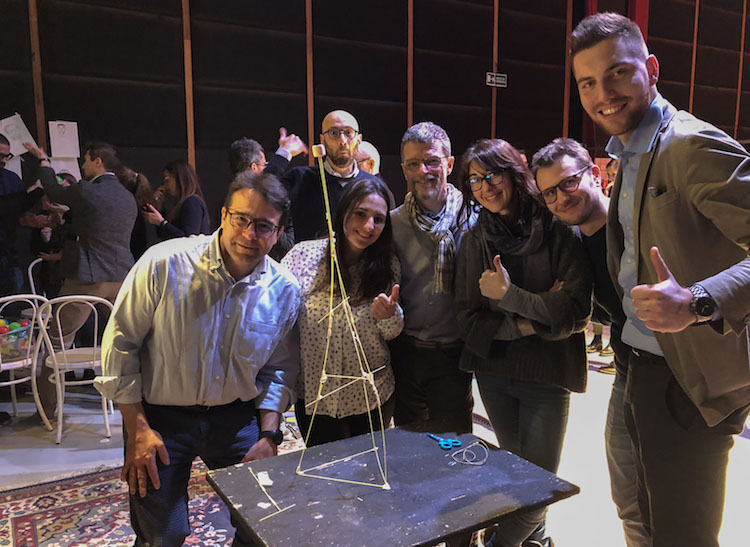
Lateral Thinking, that is just it
After that stage, we moved on with other activities: new theme, new groups.
We were given oversized Mikado sticks (if you think I am crazy you are wrong.. They were really the games’ coloured wooden sticks, just totally out of proportion).
In short, the request was to mimic an activity or an object that came to mind using the “Mega stick”; the person we had had before should have been able to guess what we were trying to communicate. For example, I used the stick as a cotton swab or as if it were a baseball bat or a guitar. The purpose? Activate the mind, and give space to the imagination and commit ourselves to be creative in the choice of actions in a way that they could be properly understood by our partner.
The next activity contributed to the deepening of lateral thinking, what is defined as Thinking Out of the Box.
The task was to list on a paper a series of words related to a provided context in two minutes of time.
Task: write down all the ways in which you can cross a river.
Three rounds in a row to free our imagination. Um, since the limits – in this very case – don’t exist, and no less, we’re properly pumped up, someone suggested right away to cross that river… “farting” (We can say it, right?!) and another gave birth to the intuition of crossing it at a gallop of a unicorn vomiting rainbows! What can I say.. Boredom, you stranger!
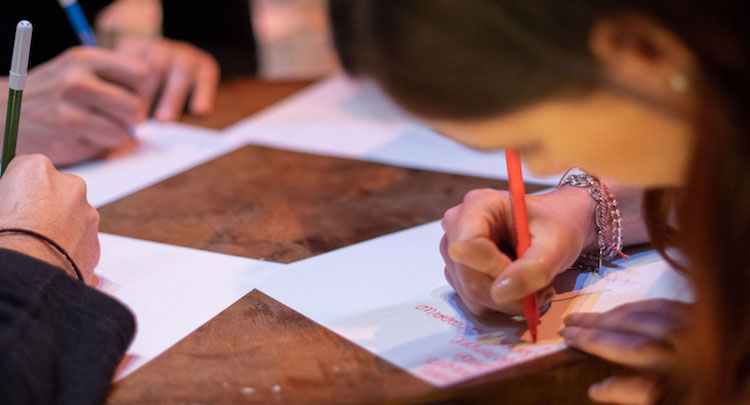
Tempus Fugit, we approach the conclusion
The soirée was then approaching its conclusion and we were dedicated to the last activities. It started again with another game on team building, on communication and on trust.
We split again into teams, two to be precise, and both were assigned a whole set of cards with which creating a narrative in sequence with its logical flow; telling a story basically. Simple? Not at all!
In addition, each person knew only the two cards of set that they were given, with the further and explicit prohibition to show them to the other members of the group. A whole story to tell, then, and each of us (I’m talking about fifteen people per group) was aware of a definitely partial reality.
How to proceed then?
The “trick” was taking turns to describe the cards we had, so to have some sort of perception by topic and then keep putting down your own cards close (otherwise it would have been too easy..). Rewind.
I know my two cards and I need to figure out where to place them based on what my teammates tell about theirs.
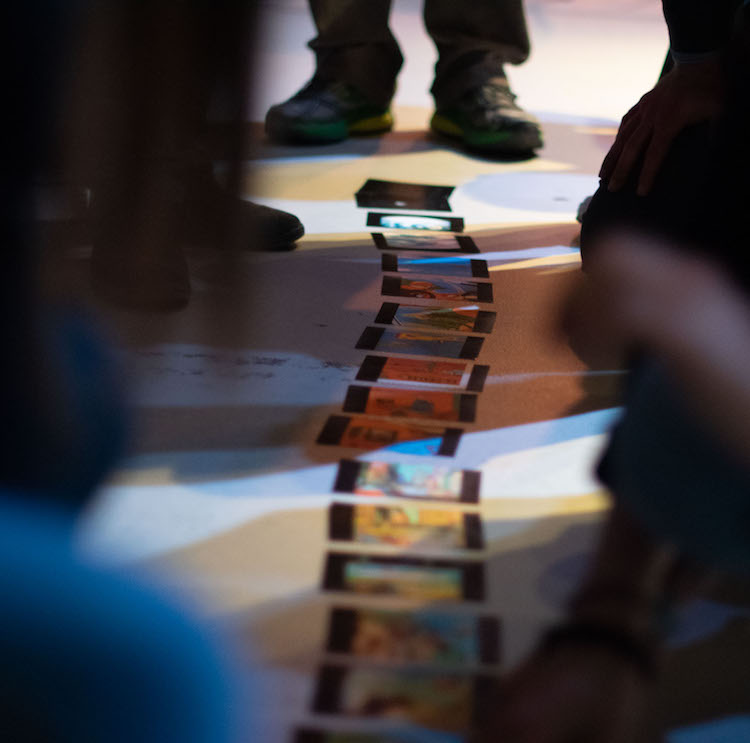
Along the way it was clear that it was a story that zoomed in from a macro-context to a micro one. It started from the space and got to the detail of a rooster comb, pictured in a magazine, passing somehow through Arizona.
Time was up, the cards were arranged, and… there was something wrong with the sequence. A small mistake, a slipped detail and it was clear that we did not pay enough attention to describe details of what was drawn on the cards. What did we learn? Everything we see could help the team not to make mistakes and hit the targets.
It was really over. How, though? It had already been two and a half hours?
It’s so true that when you have fun, time flies by.
The suggestion of a very last activity before greetings.
I decided not to take part, so I could collect a live testimony to show on our social nets. In the meanwhile, Francesco and Antonio set people facing each other to form a tunnel. Dare devil Antonio started off, and then one by one all the others, through the “tunnel of trust”.
What a beautiful moment in that terrific evening: a sequence of people going through a maze of trustful arms, that others would raise just in time to make people pass without obstruction.
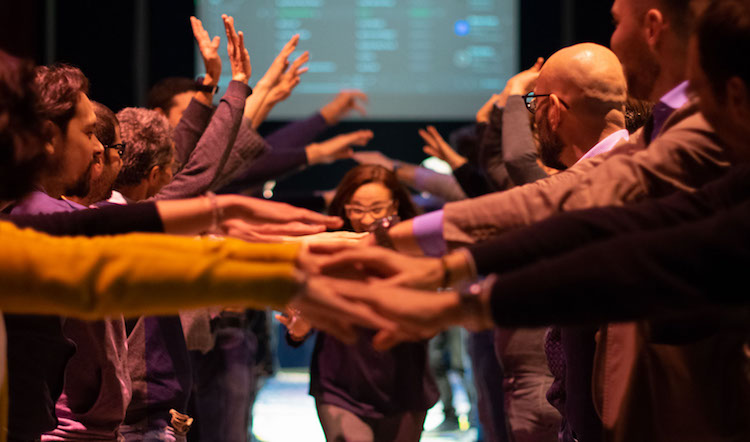
It was really time of final greetings and lowering the scenes on the Venice #MiniPlay14.
What won’t be easily erased, however, is what our dear Reloaders Francesco and Antonio games conveyed to us: a fresco of enthusiasm and wonder I still feel vivid even now as I’m writing.
I can say that I found a meaning of the italian #Play14 movement motto: “The Game is Serious”.
At this point I just have to say thanks to all those who participated with me and Interlogica to this extraordinary evening of the Agile Venice Meetup; thanks to Antonio Fazio and Francesco Pratolongo for introducing me to this playful system, previously unknown: the Serious Gaming!
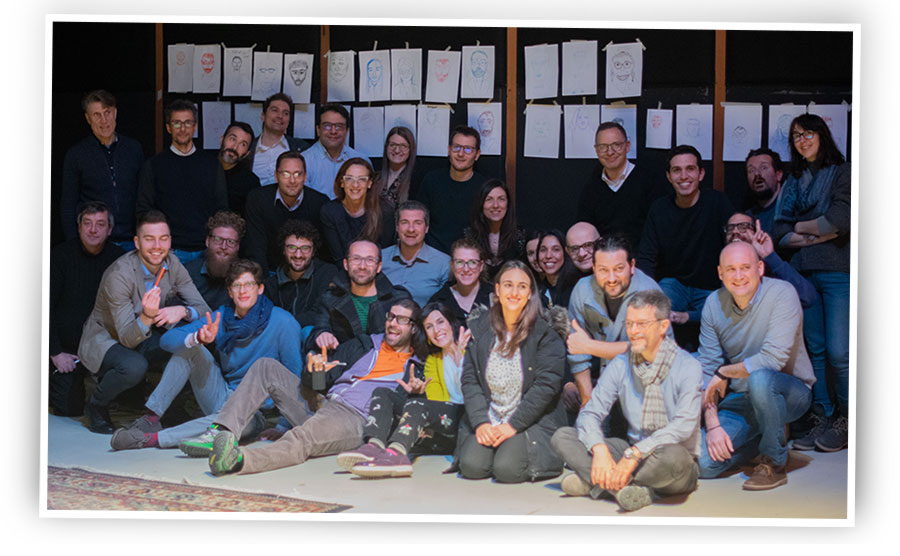
You might also like:
The Agile version of company’s bonuses: BIG UP!
Confessions of an Agile budding Marketer
How I limber your recruitment
